North Suburban Hammond Organ Service
Pictures of Recent Projects
A Hammond X66 with MIDI becomes a truly fabulous and fun instrument to play. Here is an X66 to which we added MIDI on both keyboards and also on the pedals. When you have the possibility of combining all the interesting effects that the X66 can deliver along with highly authentic instrumental MIDI sounds, the possibilities are infinite in what you can do with a little imagination.
Because of the difficulty in accessing and working on X66 manual key contacts, and also the desire not to sacrifice the X66 traps sounds, I decided on adding extra contacts. However, the X66 pedal contacts are easily accessible so I could use these to key MIDI voices without having to turn it into a major project with new contacts as is necessary with the manuals. All that is necessary is to add one series diode for each key so that the +8 VDC of the Hammond traps keyers will not back into the MIDI contacts which only carry +5 volts. This could also be done on the lower manual traps contacts except that it is actually easier to put in an extra set of key contacts under the playing keys rather than to go onto the X66 manual key contacts. In the case of the upper manual, the traps bus is also used to turn on the reiteration for each key which likewise presents an additional complication, so extra contacts are the answer here too. Sometimes when faced with these decisions, you have to figure out whether doing a job the "easy" way actually entails so much additional work and trouble that the more difficult way becomes the actual easier way. Such is what I found with X66 manual key contacts. Easier to add extras to control MIDI, and when you consider what MIDI can do for this instrument, it is definitely a worthwhile endeavor.
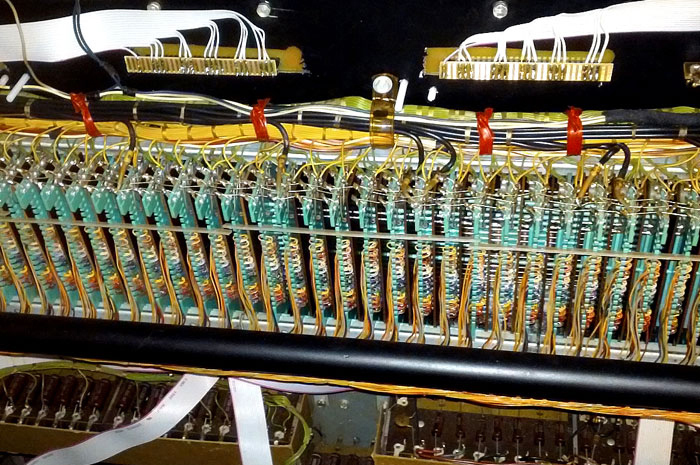
Here you can see ribbon cables leaving the underside of the upper manual via special connectors on the bottom side of the key contact printed circuit cards.

This picture shows how I have soldered individual wires from the ribbon cables to the contact side of the pedal traps keying resistors.
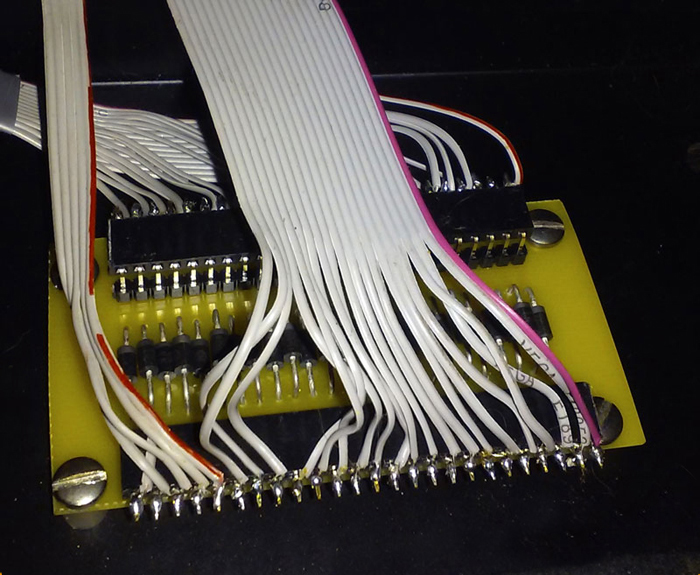
This is the special diode printed circuit card for the pedal MIDI keyers. It prevents the 8 volts DC normally on the pedal traps key contacts from backing up into the MIDI multiplexing cards which only have 5 volts on their keying inputs.
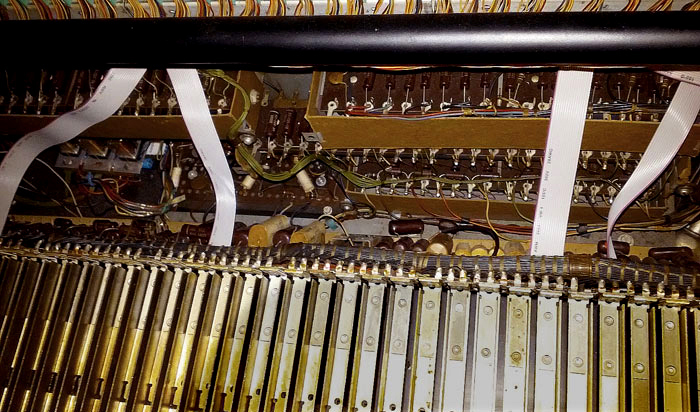
This picture shows MIDI ribbon cables passing through under the upper manual.
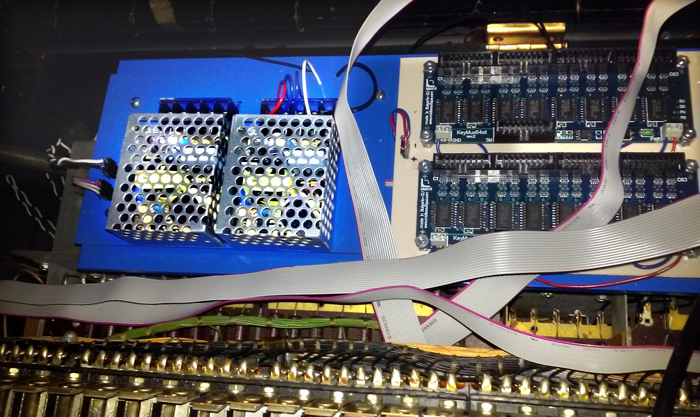
This picture shows some MIDI equipment in an X66 console. This view is looking down with the upper manual hinged up and shows MIDI related items mounted on the top of the X66 animation section. At the left are two 12 volt DC power supplies. Next we see two of three MIDI multiplexing cards which get the individual 61 signals from each manual key contact and also the 25 from each pedal contact.
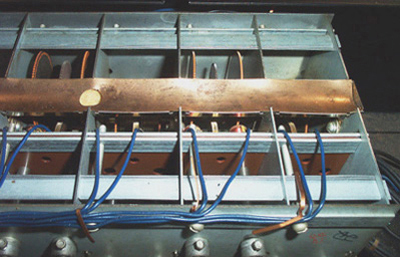
Top view of X66 tonewheel generator with felt cover removed. Here you see two pairs of tone wheels and also the oil trough.
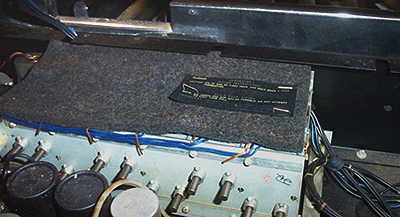
Here's the special 12 note, top octave tonewheel generator in an X66. Notice that unlike a standard Hammond tone generator, this has no transformers or capacitors to filter the output frequencies, just a 1/2" thick felt cover to keep out dust and reduce mechanical noise.
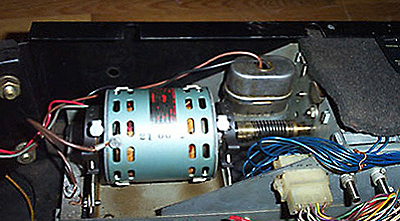
Here's a look at the special two-phase, self-starting 3600 RPM synchronous motor powering the X66 tonewheel generator. Note the oil filled capacitor to the right of the motor which provides the second phase of the incoming 60 AC for the motor. You can also see the spring-coupling between the motor and the input shaft of the tone generator.